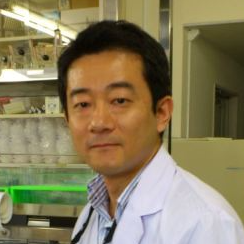Cell Biology of Cancer Invasion
A special issue of Cancers (ISSN 2072-6694). This special issue belongs to the section "Molecular Cancer Biology".
Deadline for manuscript submissions: 30 June 2024 | Viewed by 4278
Special Issue Editor
Special Issue Information
Dear Colleagues,
The invasion of tumor cells is a prerequisite for metastasis, the most dreadful aspect of cancer. Cancer cells detach from the primary tumor and migrate through the tumor stroma to reach blood vessels, where they intravasate into the bloodstream. After cancer cells arrive at the distant organ, they extravasate and colonize to form secondary tumors. A dense extracellular matrix that acts as a physical barrier exists within the basement membrane, tumor stroma, and blood vessel walls. Therefore, the invasive activity of tumor cells, i.e., degradation of the extracellular matrix and coordinated migration, is necessary for cancer metastasis.
The acquisition of invasive phenotypes is induced by the activation of oncogenic signaling pathways and epithelial–mesenchymal transition. The invasion of tumor cells is mediated by the formation of cellular structures called invadopodia, dynamic reorganization of the cytoskeleton, secretion and focalization of matrix metalloproteinases, and remodeling of the extracellular matrix. Moreover, tumor microenvironments, such as fibrotic stroma and tumor stromal cells, including cancer-associated fibroblasts (CAF) and tumor-associated macrophages (TAM), are known to promote the invasion of tumor cells. Recent advances including genome sequencing, multi-omics analyses, gene-editing technology, and state-of-the-art microscopies have provided new insights into the mechanisms of cancer invasion.
This Special Issue invites original research articles and reviews that are related to cell biological aspects of cancer invasion, such as the topics described above.
We look forward to receiving your contributions.
Dr. Hideki Yamaguchi
Guest Editor
Manuscript Submission Information
Manuscripts should be submitted online at www.mdpi.com by registering and logging in to this website. Once you are registered, click here to go to the submission form. Manuscripts can be submitted until the deadline. All submissions that pass pre-check are peer-reviewed. Accepted papers will be published continuously in the journal (as soon as accepted) and will be listed together on the special issue website. Research articles, review articles as well as short communications are invited. For planned papers, a title and short abstract (about 100 words) can be sent to the Editorial Office for announcement on this website.
Submitted manuscripts should not have been published previously, nor be under consideration for publication elsewhere (except conference proceedings papers). All manuscripts are thoroughly refereed through a single-blind peer-review process. A guide for authors and other relevant information for submission of manuscripts is available on the Instructions for Authors page. Cancers is an international peer-reviewed open access semimonthly journal published by MDPI.
Please visit the Instructions for Authors page before submitting a manuscript. The Article Processing Charge (APC) for publication in this open access journal is 2900 CHF (Swiss Francs). Submitted papers should be well formatted and use good English. Authors may use MDPI's English editing service prior to publication or during author revisions.
Keywords
- invasion
- metastasis
- intravasation
- extravasation
- invadopodia
- tumor microenvironment
- epithelial–mesenchymal transition
- cell migration
- cytoskeleton
- cell adhesion
- extracellular matrix
- matrix metalloprotease
- cancer-associated fibroblast
- tumor-associated macrophage






